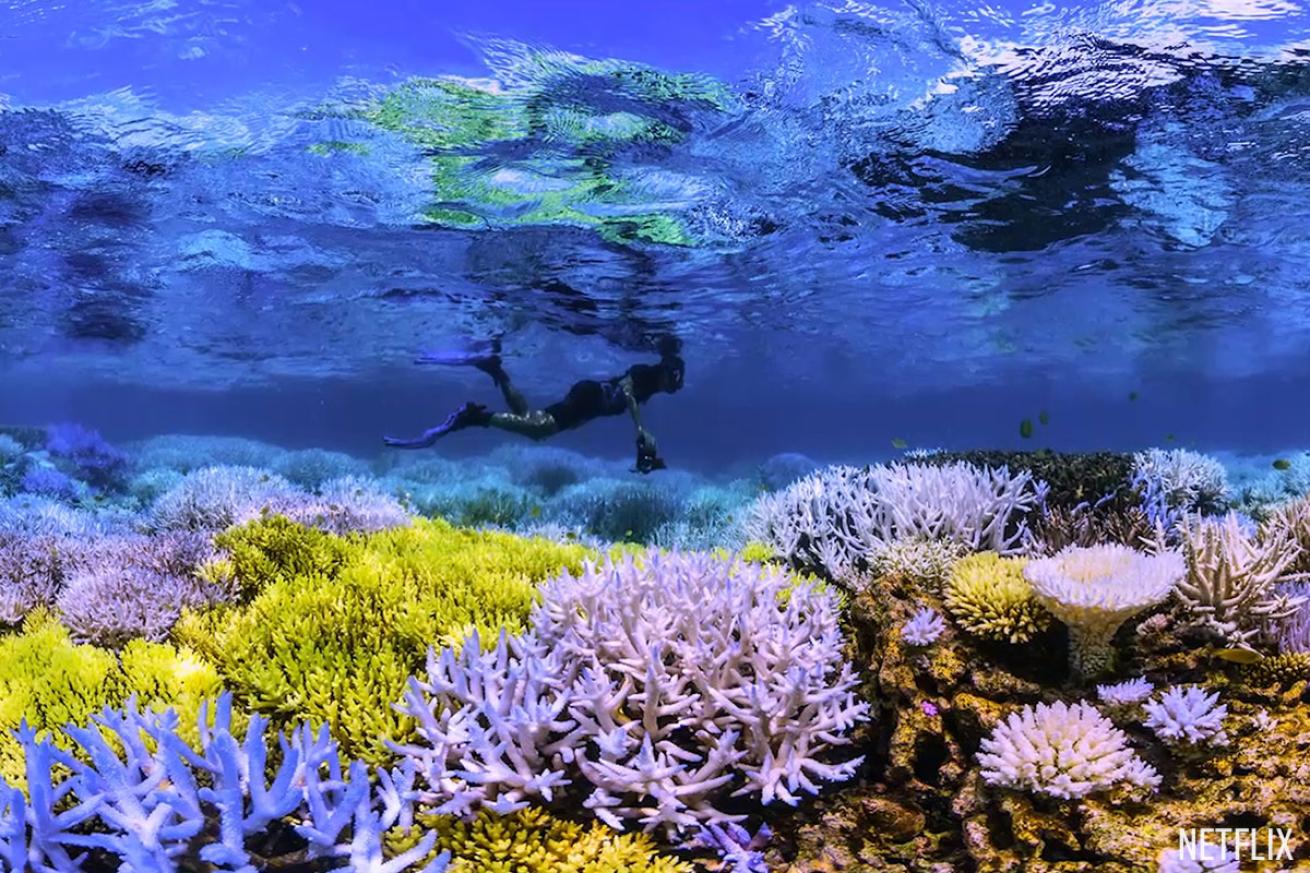'Chasing Coral' Brings Light to Environmental Crisis
Last Friday Netflix released Chasing Coral, a new documentary by the director of Chasing Ice, a film about the loss of Arctic sea ice as a result of climate change. Chasing Coral also deals with climate change, only this time, it’s coral reefs that are under pressure.
Chasing Coral isn’t quite as visually impressive as Chasing Ice — which is understandable, it’s hard to outdo that film’s imagery of massive sheets of ice being lost to the sea — but it’s a more personal story, one that packs a serious emotional punch. The film follows a crew of engineers, scientists, and an estranged former advertising executive on a mission to chronicle coral reefs around the world as they react to the effects of a warming ocean. They travel to American Samoa, Hawaii, Bermuda and Australia, and spend countless hours underwater to capture the effects of climate change.
In nature, corals are colorful. When they face enough pressure from their environment — from disease or increased temperature, for example — they turn bleach-white, the first stage of a coral’s death. While it’s possible for them to come back, if the pressure isn’t removed, the corals can starve and turn a lifeless gray, their corpses choked by algae. This phenomenon has increased dramatically in recent years, as the average temperature of the ocean continues to rise globally.
The story of Chasing Coral involves the crew’s efforts to film corals in the act of dying. Watching them go through the trials and tribulations of setting up the cameras is enjoyable, providing a human struggle for the audience to root for.
In addition to these moments, there are brief segments on the history of coral reef science, and some entertaining, concise interviews with scientists and coral experts. During a particularly funny scene, one of the filmmakers is stuck between two coral experts debating some of the fine points of coral reproduction, and he looks at the camera as if to say, “I’m as lost as you are.”

NetflixCoral fluoresces as part of its dying process, as shown in Chasing Coral.
The real standout feature of the film, however, comes toward the end. After all of their struggles trying to capture something no one has seen before, the team shows the results of their efforts to a crowd of people at a coral research symposium. The footage they share, which shows the reefs literally dying in a time-lapse, is truly devastating, and must be seen to be believed. As someone who loves the sea, it was almost too much to watch. But it makes the issue real, and it really drives home what we are doing to one of the most important ecosystems on the planet.
With footage as incredible, eye-opening, and rare as this, it’s difficult to find fault with the film. That said, while this film does wonders for coral reef education, I would have liked to hear a bit more about how much people rely on coral reefs for food and income.
Reefs, to steal a metaphor from the film, are like marine cities, host to a diverse array of marine life that is virtually unmatched anywhere else in the sea. They are the birth place for about a third of the world’s fish species, including many that are commercially caught. All of this serves to make the plight of coral reefs a plight for us as well — fewer fish equals less food for humans around the globe.
The film makes this point briefly, but not enough to really make an impact on viewers. For divers and marine enthusiasts, the problems facing reefs are obvious; we want these productive and diverse ecosystems to stay thriving. It’s everyone else who needs convincing. Including a little more about how losing reefs will impact people, particularly the fishing communities that depend on them for food, could have gone a long way to convince people outside the film’s target audience.
Instead, Chasing Coral relies on the sheer power of its unique footage, which is as heartbreaking as it is eye-opening. Let’s hope that it’s enough to make an impact.
READ MORE:
Adventure Through Mexico's Socorro Islands by Liveaboard
9 Amazing Over/Under Shots From the 2017 Through Your Lens Photo Contest
South Africa's Sardine Run: The Greatest Shoal On Earth










